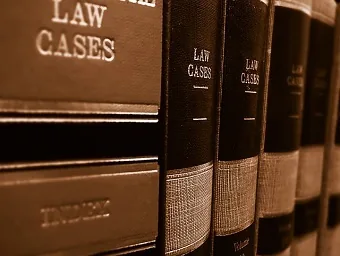Guide to Product Liability in Sacramento California
In a world where millions of consumer products are sold every day, injuries due to defects are common. There are rules that govern the distribution and production of tangible goods, however, product safety is difficult to ensure. Because of this, millions of unsuspecting individuals are injured and killed due to defective products. Product liability law is different from other types of personal injury cases. When an injury or death due to a defective product happens, it is vital that an attorney with experience in such cases is consulted. Let’s take a look at what product liability is, the different types of defects and elements of responsibility.
Product Liability
Products liability is that area of the law that deals with a manufacturer or seller’s responsibility to their customers. When someone buys a product they believe to be safe but are harmed by defects, that person can hold those who designed, manufactured or sold the item liable. This is the crux of a product liability lawsuit.
California Laws on Product Liability
In California, individuals can structure a product liability lawsuit based on three principles – negligence, strict liability and breach of warranty. Parties who can be considered liable include:
- The designer: The designer is the person or company who conceived and designed the plan for the product. If something in the design was unsafe or dangerous and allowed to remain, the responsibility lies in this phase of product development.
- The manufacturer: This involves a dangerous defect that occurred during the manufacture of the product or a component part. The defect, in this case, was not present in the design of the product or part. Sometimes a manufacturer uses component parts purchased from another company. In such cases, both the manufacturer and the company that makes the part are responsible for harm.
- The marketing process: This can include several stages of marketing, including the wholesaler and the retail establishment. Marketing issues can involve improper labeling or warnings that a product has dangers associated with it and inefficient safety instructions. The plaintiff must prove that the risks were known during the manufacture and design of the product and that they were something an ordinary consumer would not know.
Negligence in Product Liability Cases
Res ipsa loquitur is Latin for “the matter speaks for itself,” and it is an alternative to strict liability in product liability cases that involve negligence. Under this, three things must be proven:
- The defective product was under the defendant’s control.
- Negligence was necessary for the accident to happen.
- The injured party or plaintiff did not use the product in such a way as to induce injury.
If an attorney can successfully prove the three elements, it is up to the defendant to prove they were not negligent.
Strict Product Liability
Strict liability allows a plaintiff to file a lawsuit against the manufacturer, designer or seller of a product without proving negligence. In order to use strict liability, the plaintiff must prove that the product was defective or dangerous when it was introduced to the consumer, it was used in the way for which it was intended and there were no alterations made that could have made it riskier to use. Finally, the product must be shown to have caused the injuries, and no warning was given to the consumer. There are two tests that can be done to show a design flaw. One relies on consumer expectations and the other takes into account the ratio of benefits to risks. In the latter instance, the attorney needs to prove that either another, safer design was available and that this was not just less risky but did not involve a higher cost. The consumer expectations of the product must be shown to be unfulfilled.
Breach of Warranty
Breach of warranty or failure to warn is a venue for obtaining compensation when an injury happens. In this, it must be shown that appropriate warnings were not provided to consumers, something that led to injury or death. For example, a food product lacked warnings for those with dangerous allergies. There are two types of warranty: express and implied. An express warranty is one that is clearly stated by the manufacturer. An implied warranty is one that is not stated in an explicit way but arises out of the customer’s expectations.
Related Articles by the Products Liability Lawyers in Sacramento ~
Sacramento Product Liability Lawyer
I’m Ed Smith, a Sacramento product liability lawyer. If someone you loved died from a defective product or you were injured by one, you need aggressive legal assistance. Call me at (916) 921-6400 or (800) 404-5400 for friendly, compassionate and free legal advice.
I’ve helped numerous Northern California and Sacramento residents recover damages from wrongful deaths due to defective products and design flaws. I’ve also provided assistance in all types of accidents.
I belong to the Million Dollar Advocates, a forum of trial lawyers who have won a minimum of $1 million for a past client.
If you need more information about me or my practice, feel free to visit the following pages:
Photo Attribution: https://pixabay.com/en/law-books-legal-court-lawyer-1991004/
:cd bw [cs 881] cv

